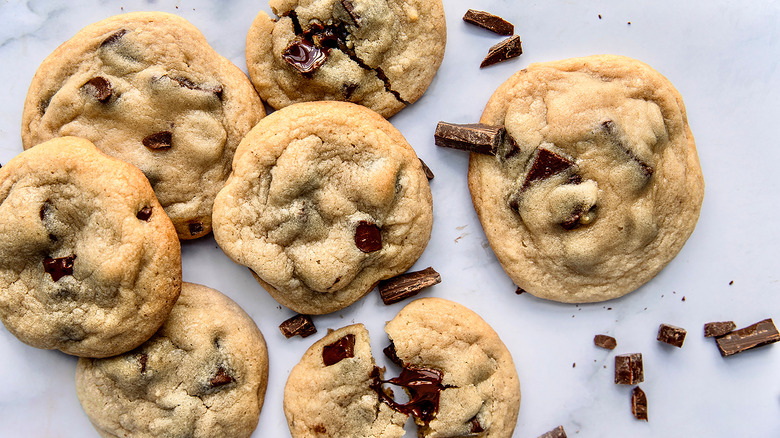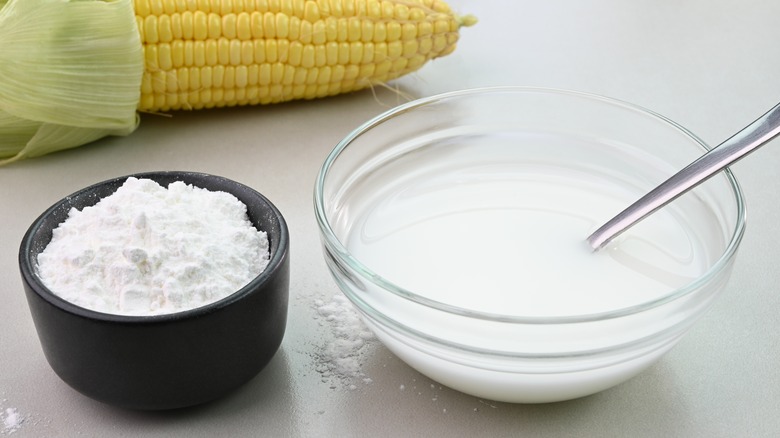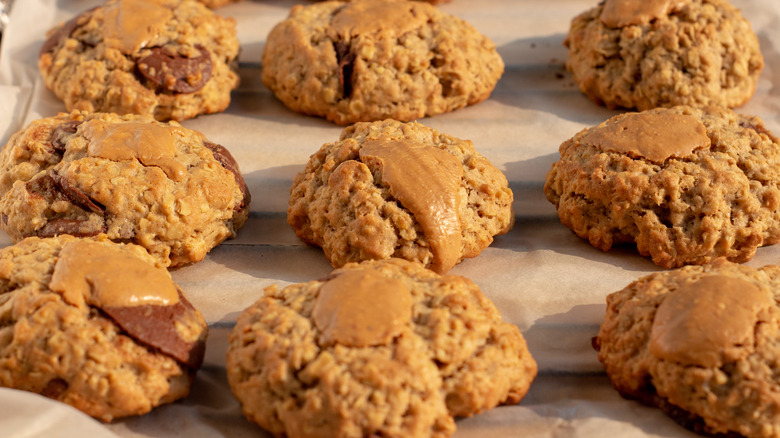Cornstarch Is The Key Ingredient For Fluffy And Soft Baked Goods
Achieving bakery-soft cookies or other sweets at home can be a struggle; even with the ingredient ratios all correct, you can still end up with a dry, flat cookie due to a number of different variables. However, some recipes for foolproof super-soft cookies contain a special extra ingredient that helps the finished product rise to a perfectly soft and chewy result: cornstarch.
Putting a little cornstarch in your baked goods can help the finished product achieve the soft, silky texture of your baking dreams, and that's backed by science. Bob's Red Mill, a company that sells a medley of different varieties of grains and flour, wrote on its blog that mixing cornstarch with flour can soften up the flour's "rigid proteins," leaving you with a dessert that's much more tender. That's part of why DIY cake flour recipes call for a touch of cornstarch; the cornstarch will stop as much gluten from forming and will result in a moist and soft cake.
How to incorporate cornstarch
Adding a touch of cornstarch into your recipe can be as easy as adding a teaspoon or two to the dry ingredients mix; however, some recommend turning that cornstarch into a slurry first with water before adding it to the dessert batter. Using a slurry helps in multiple ways: It makes it less likely that the cornstarch will clump or become grainy; it helps to keep each cornstarch molecule intact and ready for scientific reaction during the baking process; and it helps to more fully and evenly incorporate the cornstarch throughout the batter.
Using a slurry is also ideal when adding cornstarch to recipes as a thickener; some desserts, such as blueberry pie, require a cornstarch slurry mixed in with the filling to thicken it up and give it that jamlike texture. Puddings also use cornstarch on occasion to increase texture, replacing gelatin for those who prefer a vegan option.
More tips for soft baked goods
Beyond adding a bit of cornstarch to your batter, there are a few additional tips to ensure your next batch of cookies, brownies, or cupcakes comes out as soft and delicious as possible. One important variable is oven temperature: a quicker bake time at a hotter temperature typically helps the baked goods retain moisture. Just watch for doneness, and be sure to avoid scorching your dessert. A small jump in temperature, such as 375 degrees Fahrenheit instead of 350, will usually get the job done.
Underbaking your desserts slightly will also yield a softer, more tender result. Try underbaking by just a minute or two; the desserts will still set via carryover heat once they've been removed from the oven.
Once the baked goods are out of the oven and ready to be stored, you can also ensure future softness by packaging baked goods by using a simple bread hack. Place a slice of soft white bread in the container; the bread helps wick away moisture and will keep those sweet treats tender for a few days longer.


